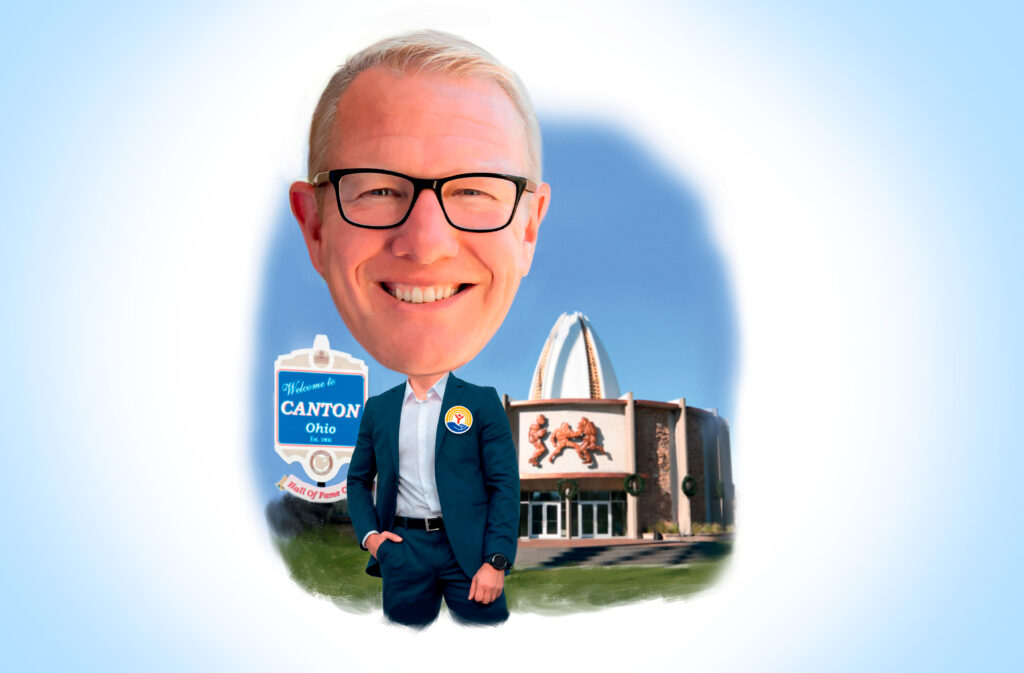
Righting the Ship

As reinsurance contracts go, it’s the whale. Market watchers consider it the largest piece of business in the world: billions of dollars worth of liability catastrophe cover for about 90% of the world’s merchant shipping, arranged by 13 marine mutuals through the International Group of Protection & Indemnity Clubs.
The details of the deal, completed earlier this year, were long a close-held secret, but in recent years the International Group has become somewhat more open about its gargantuan excess of loss reinsurance program. This year it revealed that reinsurance costs for tankers and passenger vessels would fall, despite a steady upward drift in marine liability claims over the past decade. It’s a significant achievement for the broker, Miller Insurance Services, which for many decades has placed the risk into the global reinsurance market.
Miller, spun off from protection and indemnity manager Thomas Miller in the 1940s, has deep roots in marine, but today the company—a multi-line, multinational and highly e-leveraged brokerage—is unrecognizable from its younger self. The fifth-largest producer of premium income for Lloyd’s, it claims expertise in all major lines of commercial property-casualty business. Miller handles the largest book of North American binder business coming into London (virtually without seeing a piece of paper in the office because of its exceptionally functional Online Services system) and about 50% of London Market marine war placements. The company proves that bigger isn’t always better, that scale isn’t a prerequisite for efficiency (it achieved a return on assets of nearly 40% in 2009), and that old-fashioned focus—on the satisfaction of both clients and employees—pays dividends to both.
Yet there’s something odd about Miller, something that might explain its successes: People don’t leave. The top management has been in place for the last 10 years. Most of the current executive directors joined the firm in the early 1980s. Xavier Villers, head of marine, is a relative newcomer with only 14 years’ service. The International Group, a client for more than half a century, has seen its account manager change only twice. The personnel roster does vary slightly, of course; usually this happens when top market professionals parachute in from other companies, most recently Ken MacDonald, former CEO of Aon Global U.K. As Miller expands, the company seems to have its choice of hires.
And Miller is definitely expanding. The past 10 years are already referred to as Miller’s decade of growth, and the next decade seems set to keep the pace. Miller recently established new offices in Brussels and the Far East and expanded in Bermuda to handle facultative and treaty business. It just announced an expansion of its European binding authority and large corporate risk business. And Miller has been at the sharp end of electronic trading in the London Market since the idea first came up. Last August it was the first to steer an electronic placement through the new Lloyd’s Exchange; in October it was named the best brokerage for reinsurance claims in the Global Broker and Underwriter London Market Leaders Survey—again. Miller is on a roll.
Chief Executive Graham Clarke, a Miller employee since 1982, says independence is an enormous part of the success story. For a start, Miller’s unique ownership structure is the key reason it hasn’t been swallowed by one of the giant consolidators. The operating business is owned by an employee trust, set up by Peter Miller, architect of the present-day firm and one-time chairman of Lloyd’s. The trust puts control of the company into the hands of the people on the shop floor, who today number just shy of 500. And as sure as turkeys don’t vote for Christmas, Miller people have resisted takeover, as patriarch Peter intended when he handed over the reins.
Clarke praises the management independence that the unusual ownership structure brings. “We are not worrying about outside shareholders or how to move the business on from an ownership perspective,” he explains. “Many people in our industry have looked at capitalized future earnings, which we cannot do. Instead it allows us to concentrate on our business, on our clients and on our staff, without forever having to worry about outside shareholders and what might happen to the business.”
Nonetheless, Clarke sees value in the discipline forced onto a publicly traded company, so Miller has a non-executive chairman and non-executive directors. It also has a board-level audit committee, a remuneration committee and a risk committee (each one chaired by a separate non-exec). It also publishes a comprehensive annual report and accounts. The compliance requirements that some companies see as a burden have been embraced by Miller as an assurance of probity.
Independence has also allowed for the development of a stable, experienced management team to steer the business toward its employees’ interests—which, Clarke insists, are the same as their clients’ interests. The independence ethos is embedded in him. He came into the London Market in 1974 when he joined Bain Dawes, now part of Aon but then a subsidiary of the U.K. conglomerate Inchcape.
“I learned early that, because we were owned by a public company, many important decisions were being made by people outside the management of the business,” Clarke recalls. “So I concluded that, to advance my career, I needed to work for a privately owned company, one where employees would have some say in where their business and their careers were going.” As luck would have it, he was approached to help set up an energy business at Miller, and he’s never looked back.
When he became chief executive in 2000, when he was 43, Clarke wrote down the “vision and business principles” of Miller. “This made many people scratch their head,” Clarke says, “but all we put into words is what Peter Miller would have said to any new recruit: We run this as a modern, forward-thinking organization but with exceptionally strong values, placing great importance on the people side.”
Many companies have a vision statement, but often such assertions are little more than marketing-speak. Clarke’s vision is a prescription for how Miller operates, including ideals such as “not to give up until the job is done” and the old Boy Scout maxim, “Be prepared.” It may sound hokey, but it seems to work.
The decade of growth is a tangible result: While the number of employees has stayed basically the same, the business has more than doubled in size since Clarke took over, and the volume of service awards won has surged.
At the vanguard of implementing these principles is a tight management team, headed by Clarke, which meets weekly to make collective decisions on questions of importance for the whole business. The current team stepped up in what Clarke characterized as a “baton pass from the retiring old guard” in the late 1990s. Over the years, Miller had developed into eight separate Lloyd’s brokerages operating independently in different lines of business. A first act of the new, youthful management in that era of frenzied mergers was to unite the company through an internal consolidation. Clarke and his team adopted a centralized model and a business-unit structure and began to trade as one, but they saw the need to slim down the business.
“We wanted to put our firepower behind fewer things, to do more of less,” Clarke says. It was a question of differentiation, they concluded: Do a few things very well to stand apart from both the major brokerages and the smaller competitors.
“We struggled to define it, but we knew what we really wanted to concentrate on,” Clarke says. “Call it large corporate speciality insurance and reinsurance.” Bits of the firm they inherited that didn’t fit—including an independent financial advisor, a wholesale motor operation, and a travel brokerage—were gently disposed of.
“I can see a future in those areas but not for Miller,” Clarke says. Territorial targeting followed, based on perceived opportunity, and continues 10 years on. “We have been analytical about prospective partners in chosen territories,” he says, “and proceed only when we can ensure every area of Miller is supporting them with the same level of service and expertise.” The team saw that it was underweight in the United States, relative to American premium flow to London. In response, Miller took steps to ensure that all the business streams operating effectively in London were offered to partners in North America and employed many people with North American capability. A class-based, business-unit structure forms the basic organization of the merged Miller, but it is overlaid with a geographical matrix. “That allows us to see clearly how we are managing our relationships in America, Europe and Asia, and to make sure each is coordinated across the business units,” Clarke explains.
Thus Miller’s expansion is much more focused than achieving stars on a map or pursuing premium for its own sake. For example, while large corporate clients are a new focus in Europe, Clarke is emphatic about Miller’s refusal to follow such a route in the United States. North American business has made a serious contribution to Clarke’s decade of growth, building on a strong foundation of MGA and energy business by adding speciality capabilities to their offering for independent retail and wholesale brokerages. But Miller has no plans to create a retail capability in North America.
“We will never compete with those businesses that support us,” he declares. “We bring our specialist knowledge and marketing capability in conjunction with local brokers’ skills.”
The London Market has seen the number of independent wholesale and reinsurance brokerages slashed significantly in the past two years through several high-profile consolidations. Clarke is eager to win over the disenchanted—or at least the quality disenchanted—to Miller, which he claims “offers the clout of a significant provider but with relatively few people.”
That, he says, is reflected in a much more personal level of service. It is the same personality factor that has kept Miller from becoming a consolidator, preferring to attract individuals and teams rather than acquiring companies, which, Clarke says, “presents too much risk of destabilizing the culture of the firm.”
In reinsurance, Miller has until recently been focused primarily on treaty business, but the opportunity to hire key people shaken loose by the Benfield acquisition has seen a push into facultative reinsurance, including expansion in Singapore and a new office in Brussels. It launched a facultative business unit last summer. Elsewhere in Europe, through the Middle East and in many parts of Asia, Miller has adopted a strategy similar to the one which has worked so well in North America.
“We are working with like-minded, independent brokerages,” Clarke says. “We develop a meaningful relationship with them and a strategy for supporting them on the ground with our expertise.” Clarke makes a by-now-familiar point again: “Continuity to clients and markets is very important. A lot have not been able to provide it.”
For Miller, choosing business partners—Clarke says the company is “increasingly selective”—is second only to getting the hires right. “Selecting the right clients and developing long-term relationships by meeting their expectations in every way is very important,” he says.
Of course, relationships with carriers are equally important, but Miller isn’t getting too cozy. “We have never been tempted to seek or take, when offered, any type of contingency commission,” Clarke says. “We feel it would be a conflict of our duty of care to our clients.” Internal relationships, “between the floors,” are perhaps the most important of all. They allow Miller to bring the right people to bear quickly on new business inquiries without inter-subsidiary competition. They also allow existing clients that want something different to get resources to the table quickly, which, Clarke says, “the big brokers sometimes find very difficult.” Claims are handled within business units, rather than centrally, he says, so “the claims specialists are sitting next to the broking teams.”
Information technology has played a huge role in Miller’s decade of growth. Arguably, Miller Online Services has revolutionized the way binder business is done. For both the MGA and the insurer, the transaction is entirely electronic, but live, so when a risk is underwritten in the U.S., the man in the box at Lloyd’s has the details instantly. The system, developed over a dozen years, allows carriers to monitor aggregate exposures across the Miller book of business, for example by calculating and reporting wind risk by state, county or zip code, then mapping it all out for potential hurricane paths. The data can be exported to third party systems for any kind of modelling or analytical analysis. Clarke says it has a dual advantage: Insurers have far greater control over where their exposures are, so they can use their capacity more efficiently; and a lot fewer people spend their time playing with bits of paper or keying in data. Some of that benefit is reflected back.
“It generally allows the MGA to get the maximum amount of capacity out of the market and allows them to monitor their exposures,” Clarke points out. “They get away from doing endless electronic or paper bordereau.”
Any volume business is examined for potential gains through systems. Miller has recently tweaked its electronic system for handling breeches of warranty in war risk business, for example, which now provides evidence of cover. The client goes online to get the rate, logs in to bind the cover and gets an electronic document in exchange.
“That’s what we’re looking for the whole time, how to simplify the process to create efficiency,” Clarke says. It’s working. With these systems, Miller dominates the London Market’s binding authority and war risk markets. Currently, the firm is working on similar systems for the yacht business, a new business line that Miller entered when it hired the Benfield team last year. More broadly, Clarke’s voice is loud in the ongoing drive to improve London Market efficiency through electronic systems, all with the same goal: improved client service. “Ultimately,” he says, “more efficient systems mean we can save costs, but most important is to improve service to our clients.”
The Graham Clarke File
Homes: London and Cotswolds—the city during the week and wonderful English countryside on weekends
Family: Wife Lucy and children Charlie (22), Harry (19), Annabelle (19), George (11) and Luke (9)
Car: Aston Martin DB9 (for me) and 10-year-old Toyota Land Cruiser (to ferry the family around)
Industry Roles: Director of The Council, 2003-2009; Vice President of The Insurance Institute of London; Director of The London and International Insurance Brokers Association (LIIBA)
Interests: Family, sport, wine and shooting
Best Business Trip: Joining Stephen Catlin and others in April 2009 for a three-day trip north of the Arctic Circle following The Catlin Arctic Survey
Favorite Book: Birdsong by Sebastian Faulks




